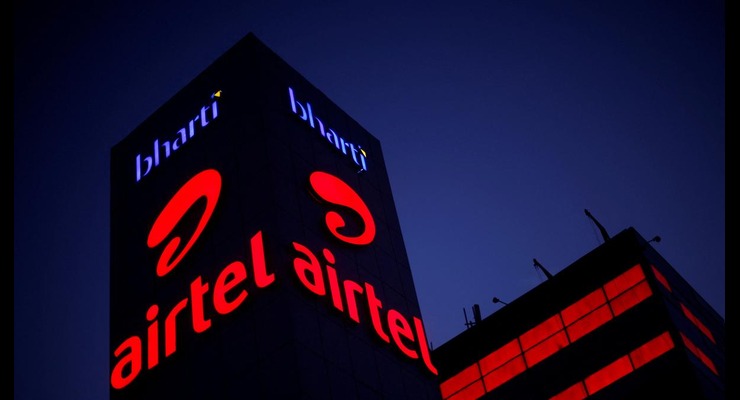The Airtel-Starlink saga marks a pivotal chapter in India’s telecommunications landscape, blending global innovation with local expertise to redefine internet access. On March 11, 2025, Bharti Airtel, India’s second-largest telecom operator, announced a groundbreaking partnership with Elon Musk’s SpaceX to bring Starlink’s high-speed satellite internet services to India. This collaboration, pending regulatory approvals, aims to bridge the digital divide in a country where 40% of its 1.4 billion population—approximately 560 million people—still lack internet access, particularly in rural and remote areas. As Airtel joins forces with Starlink to challenge the dominance of Mukesh Ambani’s Reliance Jio in the broadband market, this saga unfolds against a backdrop of regulatory hurdles, competitive tensions, and the promise of transformative connectivity. In this comprehensive blog post, we’ll explore the historical context of satellite internet in India, the specifics of the Airtel-Starlink partnership, its implications for India’s digital economy, the challenges it faces, and how this collaboration could shape the future of internet access for millions of Indians.
The Evolution of Satellite Internet in India: A Historical Context
Satellite internet in India has been a topic of interest for over a decade, driven by the need to connect its vast and diverse population. In the early 2000s, India relied heavily on Very Small Aperture Terminal (VSAT) technology for remote connectivity, primarily for banking, defense, and enterprise applications. However, these services were expensive, offered low speeds (typically 512 Kbps to 2 Mbps), and had high latency (600-800 milliseconds), making them unsuitable for widespread consumer use. The digital divide persisted, with urban areas enjoying fiber-optic broadband while rural regions lagged behind, often relying on patchy 2G or 3G networks.
The 2010s saw global advancements in satellite technology, with companies like Eutelsat OneWeb and SpaceX’s Starlink pioneering low-earth-orbit (LEO) satellite constellations. Unlike traditional geostationary satellites, LEO satellites orbit closer to Earth (at 500-2,000 km), reducing latency to 20-30 milliseconds and offering speeds of 50-200 Mbps, comparable to ground-based broadband. In India, this technology promised to connect the unconnected, but regulatory and market challenges delayed its adoption. The Telecom Regulatory Authority of India (TRAI) and the Department of Telecommunications (DoT) grappled with spectrum allocation debates—whether to auction spectrum (as favored by terrestrial operators like Reliance Jio) or allocate it administratively (as preferred by satellite providers like Starlink).
By 2023, OneWeb, backed by Bharti Group, and Jio Satellite Communications had secured Global Mobile Personal Communication by Satellite Services (GMPCS) licenses, signaling India’s readiness for satellite broadband. OneWeb completed its gateway stations in Gujarat and Tamil Nadu by early 2025, planning a commercial launch by June 2025, while Starlink faced delays due to security concerns and regulatory approvals. The Airtel-Starlink partnership, announced on March 11, 2025, marks a significant milestone, positioning India at the forefront of the global satellite internet race.
The Airtel-Starlink Partnership: A Game-Changing Collaboration
The Airtel-Starlink partnership is a strategic alliance aimed at leveraging each company’s strengths to deliver high-speed internet across India. Here’s a detailed breakdown of the collaboration:
1. Partnership Details and Objectives
Airtel, with its 300 million broadband subscribers and extensive retail network, has signed an agreement with SpaceX to distribute Starlink’s satellite internet services in India. The partnership, announced on March 11, 2025, is conditional on Starlink obtaining regulatory clearances from the DoT, the Ministry of Home Affairs, and IN-SPACe (Indian National Space Promotion and Authorisation Centre). The collaboration focuses on:
- Distribution: Airtel will sell Starlink equipment through its retail stores, making the service accessible to consumers and businesses nationwide.
- Service Expansion: Airtel will offer Starlink’s high-speed internet to its business customers, complementing its existing 4G/5G and fiber offerings.
- Rural Connectivity: The partnership aims to connect remote communities, schools, and health centers in underserved areas, addressing India’s digital divide.
- Network Synergies: Airtel and SpaceX will explore using each other’s infrastructure—Starlink to enhance Airtel’s network coverage, and Airtel’s ground network to support Starlink’s operations.
Gopal Vittal, Managing Director and Vice Chairman of Bharti Airtel, described the partnership as a “significant milestone” in delivering next-generation satellite connectivity. Gwynne Shotwell, President and Chief Operating Officer of SpaceX, highlighted the transformative potential of Starlink, noting Airtel’s pivotal role in India’s telecom story.
2. Starlink’s Technology and Offerings
Starlink, with over 5,600 satellites in orbit and 2.7 million global users, offers download speeds of 50-200 Mbps, with plans to reach 300 Mbps soon and 1 Gbps in the long term. Its low latency (20-30 milliseconds) makes it ideal for streaming, gaming, and video calls, even in remote areas. In India, Starlink is expected to be positioned as a premium service, targeting:
- Rural and remote users with limited connectivity options.
- Businesses in underserved areas needing reliable internet.
- Educational institutions and health centers in regions lacking infrastructure.
However, urban users with access to fiber or 5G may find Starlink less cost-competitive, as fiber offers higher speeds (up to 1 Gbps) at lower prices.
Implications for India’s Digital Economy
The Airtel-Starlink partnership has far-reaching implications for India’s digital economy, which is already the world’s second-largest internet market with 950 million subscribers:
1. Bridging the Digital Divide
With 40% of India’s population offline, primarily in rural and mountainous regions, Starlink’s satellite technology can deliver reliable internet where terrestrial infrastructure is unfeasible. For example, villages in the Northeast or Himalayan regions, where laying fiber is cost-prohibitive, can access high-speed internet for the first time. This connectivity can enable:
- Education: Online learning platforms can reach students in remote areas, where only 30% of schools have internet access.
- Healthcare: Telemedicine can connect rural patients to urban doctors, addressing the 70% shortage of healthcare facilities in villages.
- Economic Growth: Small businesses in rural areas can access e-commerce platforms, potentially increasing their revenue by 20-30%, as seen in other developing markets.
2. Competition in the Broadband Market
The partnership intensifies competition with Reliance Jio, which dominates India’s broadband market with 14 million wired subscribers and 500 million mobile internet users. Jio, having spent $19 billion on spectrum auctions, fears losing customers to Starlink’s satellite services, which don’t require traditional spectrum bidding. Airtel’s move, alongside its existing partnership with Eutelsat OneWeb, positions it as a formidable challenger, offering a mix of terrestrial and satellite solutions. This competition could drive down prices, benefiting consumers, but may also strain Jio’s market share, especially in rural segments.
3. Boost to Digital India Initiatives
The partnership aligns with the Indian government’s Digital India vision, launched in 2015 to ensure digital access, literacy, and services for all citizens. By connecting underserved areas, Airtel-Starlink can support initiatives like:
- E-Governance: Rural citizens can access government services like Aadhaar or PM-KISAN schemes online.
- Financial Inclusion: Digital banking and UPI transactions can reach the 190 million unbanked Indians, fostering economic inclusion.
- Skill Development: Online training programs can upskill rural youth, addressing the 50% unemployment rate in some regions.
Challenges Facing the Airtel-Starlink Partnership
Despite its potential, the partnership faces several challenges that could impact its success:
1. Regulatory Hurdles
Starlink’s entry into India has been delayed by regulatory challenges since 2022, when it refunded preorders after attempting to launch without proper licenses. As of March 12, 2025, Starlink still requires:
- Security clearance from the Ministry of Home Affairs, amid concerns about data privacy and potential misuse by anti-social elements.
- Spectrum allocation from the DoT, a contentious issue given Jio’s push for auctions versus Starlink’s preference for administrative allocation.
- GMPCS authorization to commence commercial operations.
Posts on X reflect concerns about these regulatory delays, noting that Airtel will be responsible for distribution and compliance, potentially mitigating risks of unauthorized use. However, the timeline for approvals remains uncertain, especially after incidents of illegal Starlink terminals being seized in regions like the Andaman and Nicobar Islands.
2. Competitive Tensions and Market Dynamics
Reliance Jio has actively opposed Starlink’s entry, arguing that satellite providers should bid for spectrum like terrestrial operators, a stance rooted in its $19 billion spectrum investment. In contrast, Airtel, with a stake in OneWeb, has supported administrative allocation, highlighting a conflict of interest. OneWeb, focusing on B2B services, complements Starlink’s B2C approach, but Jio’s potential partnership with Amazon’s Kuiper (speculated on X) could escalate the satellite broadband race. This competition may lead to:
- Price wars, potentially lowering costs but straining profitability.
- Regulatory lobbying, delaying approvals as stakeholders debate spectrum policies.
3. Cost and Accessibility
Starlink’s premium pricing—estimated at $50-100 per month globally, plus $500 for equipment—may be prohibitive for rural Indians, where the average monthly income is $150. While Airtel’s distribution network can reduce logistical costs, affordability remains a barrier. Subsidies or tiered pricing models may be necessary to ensure widespread adoption.
4. Technical and Operational Challenges
Satellite internet, while transformative, faces technical hurdles:
- Weather Interference: Heavy rains, common during India’s monsoon season, can disrupt satellite signals, affecting reliability.
- Scalability: Serving India’s 1.4 billion population requires significant satellite capacity, with Starlink planning to deploy thousands more satellites.
- Data Compliance: Airtel will provide ground stations to ensure data compliance with Indian laws, but managing cross-border data flows remains complex.
Future Prospects: Shaping India’s Connectivity Landscape
The Airtel-Starlink partnership has the potential to reshape India’s connectivity landscape, but its success hinges on strategic execution:
1. Opportunities for Expansion
- Rural Empowerment: Connecting 560 million offline Indians can unlock $50 billion in economic value by 2030, per World Bank estimates, through increased productivity and market access.
- Global Leadership: India could become a regional hub for satellite broadband in South Asia, leveraging Airtel’s infrastructure to serve neighboring countries like Nepal and Sri Lanka.
- Innovation Ecosystem: Enhanced connectivity can foster tech startups in rural areas, particularly in agritech and edtech, driving innovation.
2. Strategic Recommendations
To maximize impact, Airtel and Starlink should:
- Collaborate with Government: Partner with Digital India initiatives to subsidize costs for rural users, ensuring affordability.
- Focus on Education and Awareness: Launch campaigns to educate rural communities about satellite internet benefits, addressing adoption barriers.
- Innovate Pricing Models: Introduce pay-as-you-go plans or bundle Starlink with Airtel’s mobile services to enhance accessibility.
- Strengthen Infrastructure: Invest in local ground stations and weather-resilient technologies to ensure consistent service.
3. Long-Term Vision
As satellite technology evolves, Starlink’s speeds could reach 1 Gbps, rivaling fiber optics and making it a viable option even in urban areas. The partnership could also pave the way for broader India-US tech collaborations, especially given recent discussions between Prime Minister Narendra Modi and Elon Musk in Washington. However, balancing competition, regulation, and affordability will be key to ensuring that this saga delivers on its promise of universal connectivity.
Conclusion: A New Era of Connectivity
The Airtel-Starlink saga is more than a business partnership—it’s a bold step toward closing India’s digital divide and redefining its telecommunications future. By combining Airtel’s local expertise with Starlink’s cutting-edge technology, this collaboration has the potential to connect millions, empower communities, and drive economic growth. Yet, it must navigate regulatory uncertainties, competitive pressures, and operational challenges to succeed. As India stands on the cusp of a connectivity revolution, the Airtel-Starlink partnership could become a beacon of innovation, ensuring that every Indian, regardless of location, has access to the digital world. What do you think this partnership means for India’s future? Share your thoughts on comments.

 Sangram Keshari
Sangram Keshari









